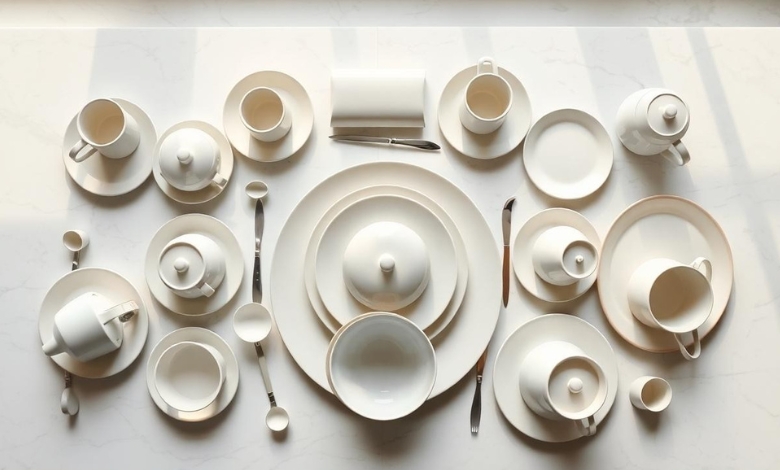Get clear insights into what trademark class mugs, drinkware, and dinnerware belong to, without the legal jargon hassle.
Getting into trademarks and patents can feel overwhelming,
especially with all the jargon and classifications.
If you’re trying to figure out where things like mugs and drinkware fit,
you’re not alone—I’ve been there too.
Fortunately, you’ve found the right resource.
This article will explain exactly what you need to know about trademark classes for mugs, drinkware, and dinnerware, so you can skip the legal mumbo jumbo.
Let’s get started.
Article Breakdown
Trademark Class for Mugs, Drinkware, and Dinnerware

Here’s the gist:
Mugs, drinkware, and dinnerware are usually part of Trademark Class 21, which includes a lot of kitchen stuff like dishes and glassware.
It sounds simple, but it’s more than just remembering a number.
You need to understand what Class 21 covers, why it’s important, and how to register your trademark in this class to protect your brand and keep up with the competition.
What’s Trademark Class 21 and Why Should You Care?
Think about it:
You’ve come up with a cool line of custom mugs featuring inspiring quotes,
or maybe a sleek set of dinnerware that’s so stunning, it should be Instagram-famous.
You’ve poured your heart and savings into this line,
and the last thing you want is someone else trademarking something similar.
That’s where the Nice Classification system, particularly Class 21, comes in handy.
Trademark Class 21 covers a bunch of household stuff like:
- Glassware—those trendy stemless wine glasses that are all the rage.
- Porcelain and earthenware—your beautiful, hand-crafted plates fall into this.
- Household or kitchen utensils and containers—things like mugs, bowls, and other dinnerware.
Why It Matters:
If you’re in the home goods or kitchenware game, Class 21 is a big deal.
Registering your products in the right class means your brand’s protected, and no one can rip off your creative ideas in that space.
Why I Care About Trademark Classes
When I launched my side business making novelty drinkware, my main focus was on the designs, marketing, and pricing.
I thought trademarks were something I could deal with once my business grew.
But I quickly realized that even small businesses should think about trademarking.
Just a few months in, I discovered a larger company already had a trademark for a similar product in Class 21.
That experience taught me how important it is to understand trademark classes before launching anything.
What’s in Class 21?
Class 21 is like your kitchen’s catch-all drawer; it covers a lot of different items.
Take a detailed look at the contents provided:
- Cups and Mugs: Everything from your go-to coffee mug to travel cups.
- Dinnerware: Plates, bowls, serving dishes—made from porcelain, glass, or ceramic.
- Kitchen Utensils: Spatulas, ladles, and serving spoons.
- Glass and Ceramic Goods: Things like mason jars, wine glasses, and teapots.
- Household Containers: Storage containers like jars and canisters.
Example:
Imagine a trendy kitchen brand selling matching sets of dinnerware, drinkware, and cooking tools.
They need their whole product line covered under Class 21 to make sure their brand stays unique and isn’t copied by competitors.
What’s Not Included?
Don’t think that every kitchen gadget is in Class 21.
Things like coffee makers and kettles, which are electrical appliances for making drinks, typically fit into Class 7 instead.
Steps to Register Your Trademark Under Class 21
1. Preliminary Research
Before you even think about filling out paperwork, you’ll need to check the trademark databases.
The USPTO (United States Patent and Trademark Office) and WIPO (World Intellectual Property Organization) provide online tools to search existing trademarks.
Make sure no one else has already registered a mark similar to yours in Class 21.
Tip: Start by brainstorming potential conflicts. If you’ve named your line “Cozy Cup Co.”, search for similar terms like “Cozy Mug” or “Comfort Cup” to ensure you’re in the clear.
2. Prepare Your Application
Gather the necessary documentation. You’ll need:
- A clear representation of your trademark (text, logo, or design).
- A detailed account of the products and services associated with the trademark.
- Proof of use or intention to use the trademark.
3. File Your Application
Submit your application via the appropriate trademark office.
For those in the U.S., this would be the USPTO. The filing process can take several months, so patience is key.
4. Monitor Your Application
Once submitted, your application goes through an examination phase.
The examiner checks for compliance with trademark regulations and potential conflicts with existing marks.
Keep an eye on your status and respond promptly if any issues arise.
Tips for Successfully Navigating Class 21 Registration
1. Be Specific in Your Descriptions
When filling out your application, avoid vague language. Don’t just say “drinkware”; specify “glass mugs” or “ceramic teacups.” The more precise you are, the less likely it is that your application will face opposition or delays.
2. Think Beyond Borders
If you’re planning to expand internationally, you’ll need to consider trademark registration in other countries. WIPO’s Madrid System allows you to register in multiple countries with one application, making global protection much easier.
3. Consider Professional Help
Trademark law can be a maze. If you’re unsure, don’t hesitate to consult with a trademark attorney. They can provide expert guidance and handle complex issues that might arise during the application process.
Common Misconceptions About Trademark Class 21
“Trademarking my logo means I’ve protected it in all aspects.”
Not quite. Registering your logo under Class 21 only protects it within that category. If you plan to expand into related areas like branded clothing or tote bags, you’ll need to register under additional classes.
“I don’t need to trademark my products until my business grows.”
This is a risky move. Early-stage businesses are often the most vulnerable to trademark disputes. Investing in trademark protection upfront can save you from expensive legal battles down the line.
The Benefits of Registering Your Trademark in Class 21
1. Brand Protection
Securing a trademark under Class 21 prevents others from selling similar products under a name or logo that could be confused with yours. This exclusivity builds trust with customers and reinforces brand loyalty.
2. Legal Backing
Should someone attempt to copy your product or use a name that infringes on your trademark, you’ll have the legal tools to defend your brand. Without this, you could find yourself in a David-versus-Goliath situation with little recourse.
3. Enhanced Value
A registered trademark adds value to your business. If you ever decide to sell or license your brand, having trademarks in place makes your business more attractive to potential buyers or partners.
Key Takings
- Navigating the world of trademark classes can seem overwhelming,
- but understanding the fundamentals of Class 21 is a solid step in the right direction.
- Remember, protecting your brand isn’t just about today—it’s about securing your place in the market for years to come.
- Whether you’re crafting artisanal dinnerware or launching a line of quirky mugs,
- registering under the right class keeps your hard work safe from copycats and competitors.
Useful Resources:
- United States Patent and Trademark Office (USPTO): USPTO Website
- World Intellectual Property Organization (WIPO): WIPO Website



